The OM906 engine (9060301102 ) is a diesel powerhouse, but its crankshaft endures extreme stress from urban driving cycles. In 2025, Euro-6 regulations require near-zero emissions, with non-compliance fines amounting to $10,000 per bus annually (European Commission, 2025). Meanwhile, electrification remains out of reach for many fleets, with electric bus costs averaging $500,000 versus $5,000 yearly for OM906 maintenance. Proper crankshaft care reduces emissions by 5%, extends engine life by 100,000 km, and delays costly fleet transitions.
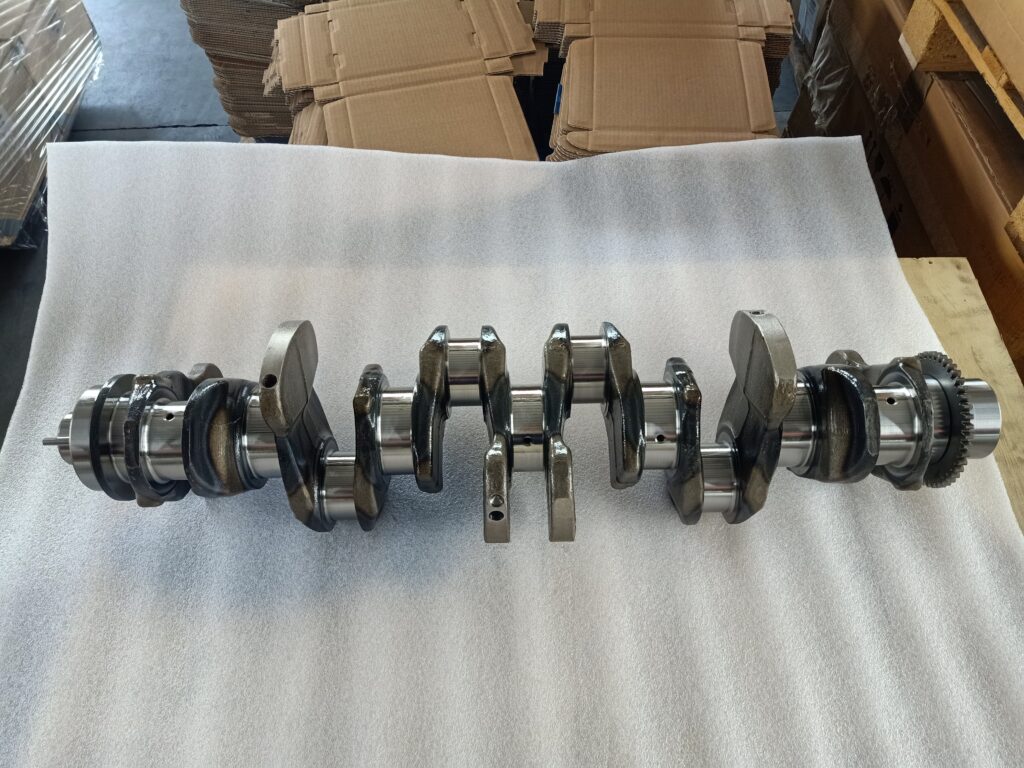
Neglecting maintenance risks catastrophic failures. A single crankshaft repair averages $1,800-$2,500, while downtime costs $500-$1,000 daily per bus. Overhauls, if damage escalates, can exceed $4,000. Volgen Power’s predictive tools and OEM parts help you avoid these pitfalls, ensuring your fleet stays competitive in 2025’s challenging landscape.
Table of Contents
Tip 1: Prioritize Regular Inspections and Lubrication
The OM906 crankshaft faces immense pressure from constant torque (1,100-1,300 Nm). Micro-cracks as small as 0.01 mm or wear exceeding 0.05 mm on main journals can lead to $2,500 failures. Proper lubrication with SAE 15W-40 oil (viscosity index ≥135) reduces friction by 20%, protecting against scoring or surface damage.
How often should I inspect my crankshaft?
Inspect every 10,000 km using magnetic particle inspection (MPI) or ultrasonic testing, as per Mercedes-Benz W906 specifications. Change the oil every 7,500 km or 6 months to maintain optimal performance in high-temperature conditions (up to 120°C in urban buses).
Inspection Frequency: Every 10,000 km detects cracks as small as 0.01 mm.
Lubrication Specs: SAE 15W-40 oil, changed every 7,500 km, reduces wear by 0.005 mm/year.
Cost Savings: Early detection prevents $2,200-$2,500 repairs.
A Seattle transit fleet faced frequent crankshaft wear in its OM906-powered Citaro buses. By implementing bi-monthly MPI inspections and switching to synthetic SAE 15W-40 oil, they reduced wear by 18%, saving $2,200 per bus over two years. Routine oil analysis, detecting metal particulates at 10 ppm, allowed early intervention, avoiding costly overhauls.
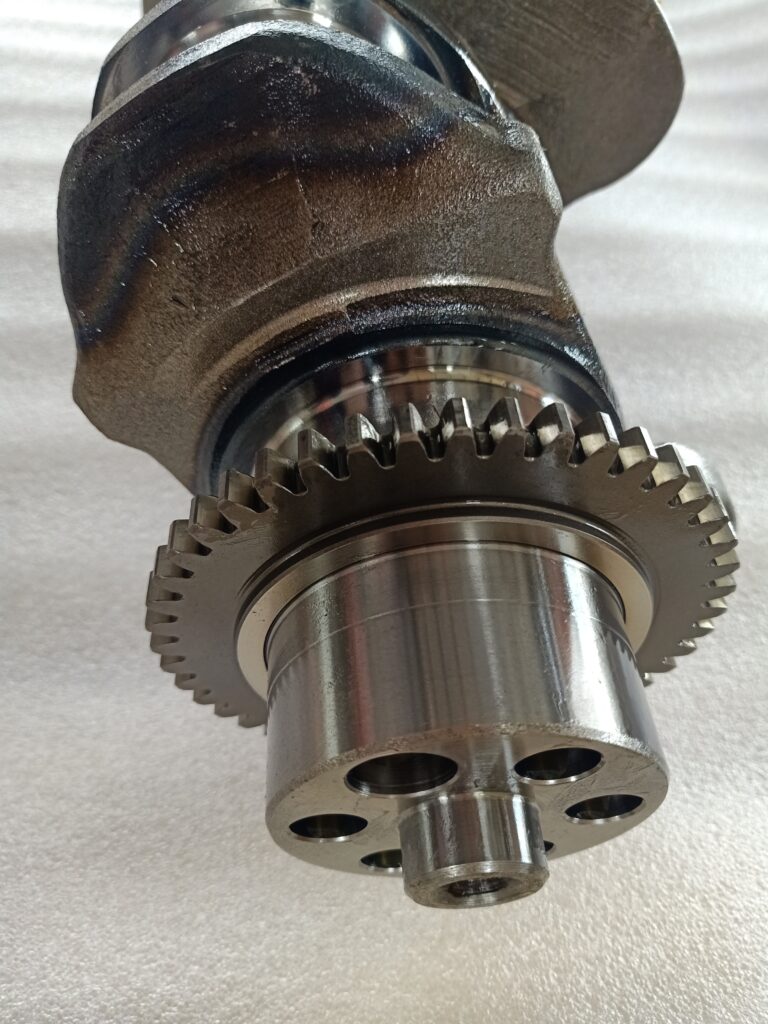
Action Steps
- Schedule MPI or ultrasonic inspections every 10,000 km with a certified technician.
- Use Volgen Power Lubricant Solutions, formulated for OM906 engines.
- Maintain a digital log of inspection findings for trend analysis.
Expert Advice: “Routine oil analysis detecting 10 ppm metal particulates, paired with thermal imaging for overheating journals, can save $2,000 per bus by catching wear early.”
Tip 2: Monitor Engine Vibration and Balance
Vibration is a silent killer for OM906 crankshafts. The International Organization for Standardization (ISO 10816-3) sets a peak acceleration limit of 10 m/s² for bus engines. Exceeding this by just 2 m/s² can increase wear by 30%, risking $2,000 repairs.
What causes vibration issues?
Imbalance (>0.02 mm deviation) or bearing wear often triggers excessive vibration. Monthly calibration with a crankshaft balancer like the Schenck TBcomfort ensures a balance grade of G 2.5, critical for high-traffic urban fleets.
Core Data
Vibration Limit: 10 m/s² (ISO 10816-3).
Calibration Frequency: Monthly for fleets averaging 50,000 km/year.
Cost Savings: Balancing prevents $2,000 repairs and extends engine life by 60,000 km.
Real-World Example
A Madrid bus operator detected a 14 m/s² vibration spike at 400,000 km using a spectrum analyzer. A $300 balancing service corrected the issue, avoiding a $2,000 crankshaft repair and extending engine life by 60,000 km. This precision saved 10% on fuel costs, a critical factor in 2025’s rising diesel prices.
Action Steps
Install vibration sensors from Volgen Power’s Diagnostic Tools.
Calibrate balancers monthly using a Schenck TB comfort.
Use a spectrum analyzer to pinpoint vibration sources.
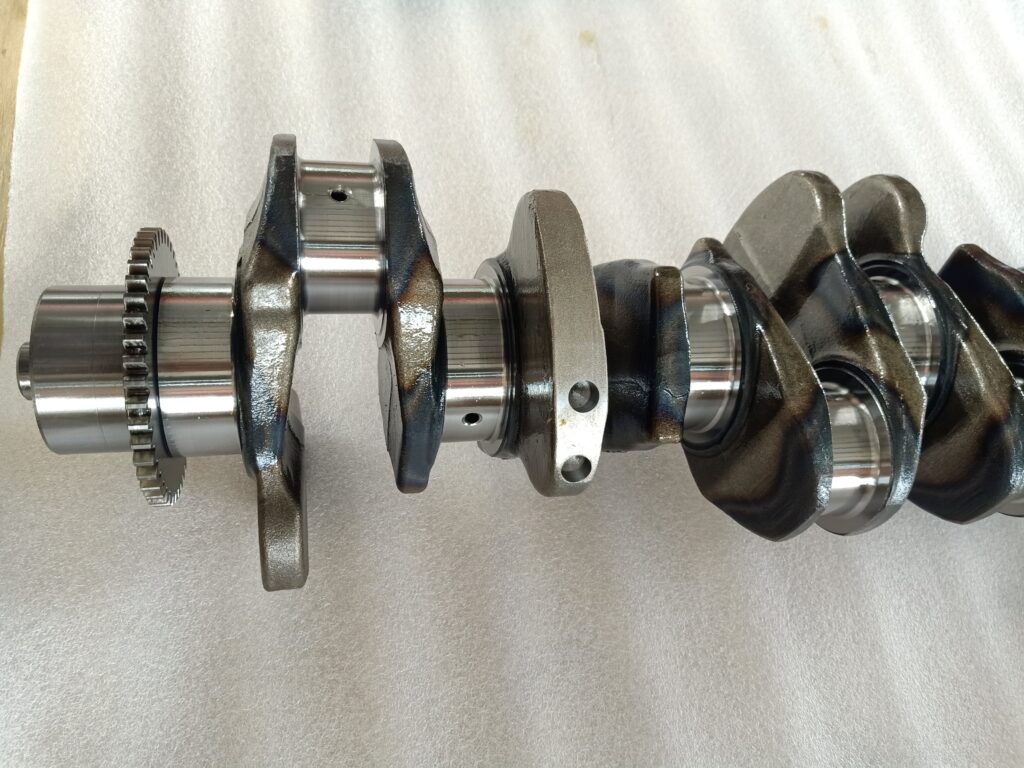
Tip 3: Ensure Precise Installation and Alignment
A misaligned crankshaft can fail within 100,000 km, increasing stress by 25% and disrupting urban schedules. Proper installation is non-negotiable for fleet reliability.
Will a poor installation damage my crankshaft?
Yes. A 0.1 mm misalignment or incorrect torque can lead to fatigue failure, costing $3,500 per incident.
- Alignment Precision: ±0.01 mm using a Mitutoyo 513-404 dial indicator.
- Torque Specs: 120 Nm + 90° for main bearing caps (W906.1 specs).
- Cost Savings: Proper alignment prevents $3,500 failures.
Real-World Example: A Toronto fleet suffered a $3,500 crankshaft failure due to a 0.15 mm misalignment from a DIY install. After retraining technicians with laser alignment tools, they eliminated further losses. In Amsterdam, an operator saved $1,500 by ensuring 0.15 mm endplay during a professional install, verified with a feeler gauge.
- Hire certified mechanics for installations.
- Use Volgen Power Installation Kits with laser alignment tools and thrust bearings.
- Document torque values for every install.
Tip 4: Adhere to Oil and Filter Schedules
Dirty oil accelerates crankshaft wear to 0.02 mm/year, reducing lifespan by 40%. Clean oil and high-quality filters are your first line of defense.
How often should I change oil to protect my crankshaft?
Change oil every 7,500 km or 300 operating hours, and replace filters every 15,000 km with a β-ratio 200 filter (e.g., Mann-Filter HU 818/4 x).
Oil Change Frequency: Every 7,500 km or 300 hours.
Filter Specs: β-ratio 200 limits wear to 0.005 mm/year.
Cost Savings: Premium filters save $1,800 per bus.
A London fleet extended crankshaft life by 25,000 km using 6,000 km oil changes and Mann-Filter HU 818/4 x, saving $1,800 per bus. In Sydney, a routine oil test caught a viscosity drop to 11 cSt at 100°C, preventing a $2,000 failure at 350,000 km.
- Use Volgen Power Oil & Filter Bundles for 99.5% filtration efficiency.
- Test oil TBN monthly (<5 mg KOH/g) to avoid sludge.
- Track changes with a digital log.
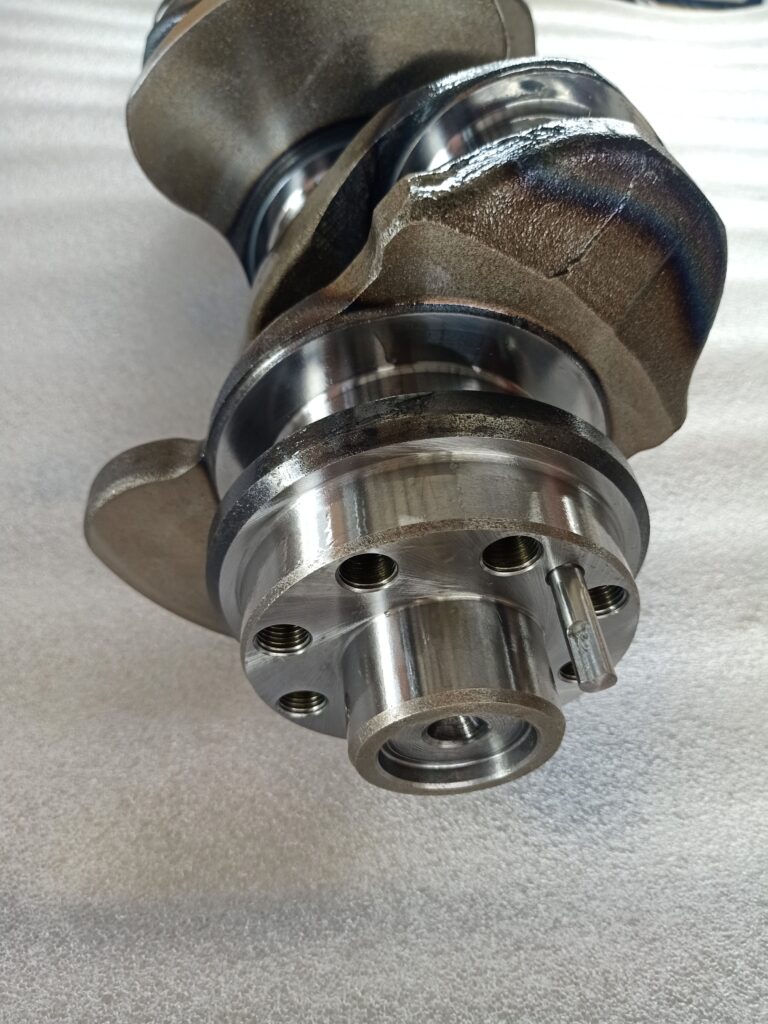
Tip 5: Act Swiftly on Wear and Replace
Wear exceeding 0.1 mm on main journals, 0.2 mm on rod journals, or hardness below 50 HRC signals replacement time. Delaying risks $4,000 overhauls.
When should I replace my crankshaft?
Replace at 0.1 mm wear, detected via oil analysis or micrometer checks. A new A9060300101 crankshaft ($1,200, 2-year warranty) is far cheaper than repairs.
Wear Threshold: 0.1 mm (main journals), 0.2 mm (rod journals).
Replacement Cost: $1,200 vs. $4,000+ for overhauls.
Efficiency Gain: New crankshafts improve fuel efficiency by 10%.
Real-World Example: Paris fleet replaced a crankshaft at 450,000 km with 0.15 mm wear, avoiding a $4,000 overhaul and regaining 10% fuel efficiency. In Tokyo, a bore scope detected 0.12 mm wear at 420,000 km, prompting a $1,200 replacement that saved $3,500.
Action Steps
- Monitor wear with oil analysis or bore scopes.
- Order Volgen Power OM906 Crankshafts for same-day shipping.
- Stock spares to minimize downtime.
Expert Advice: “Use a bore scope to map wear patterns and choose OEM parts for 15% better efficiency,” says Tom Eriksson, Volgen Power Parts Manager.
Key Expert Takeaways
Dr. Hans Müller: “Oil analysis and thermal imaging detect wear early, saving $2,000 per bus.”
Karl Schmidt: “Laser alignment ensures precise installation, cutting setup time by 30%.”
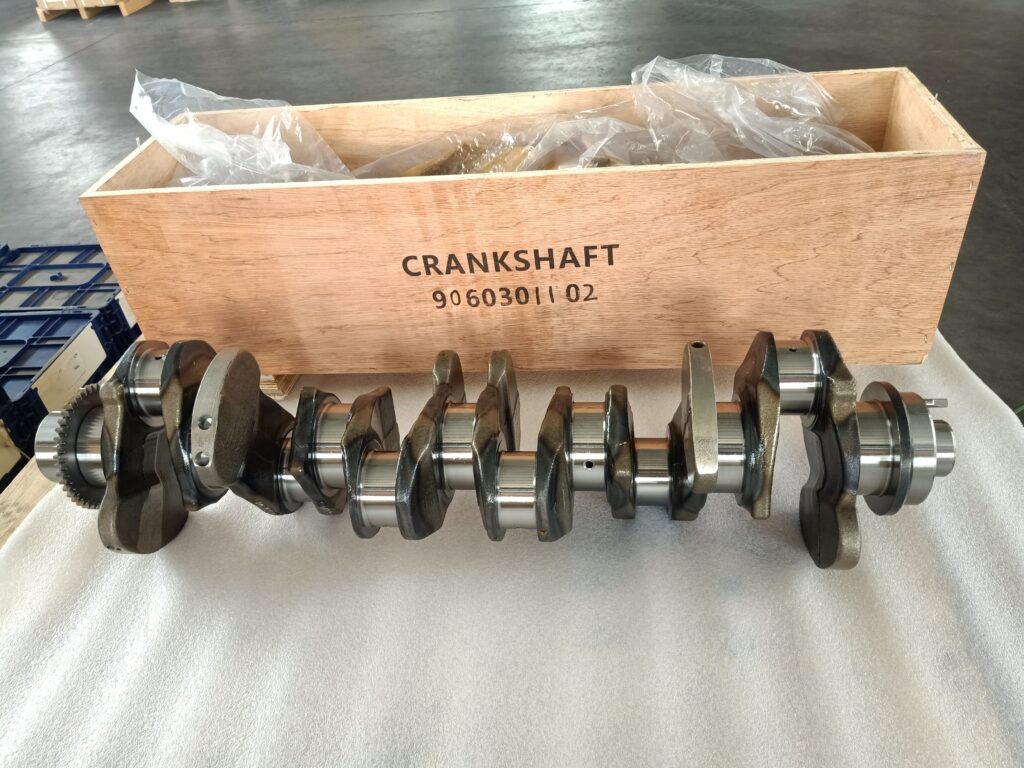
Why Act in 2025?
Euro-6 compliance is non-negotiable, with fines escalating and diesel prices rising 8% annually (IEA, 2025). Meanwhile, electrification costs remain prohibitive for most fleets. By following these tips—inspecting every 10,000 km, limiting vibration to 10 m/s², aligning to ±0.01 mm, changing oil every 7,500 km, and replacing at 0.1 mm wear—you’ll save $5,000-$10,000 per bus, reduce emissions by 5%, and extend OM906 life by 100,000 km.
Next Steps:
- Schedule your next 10,000 km inspection.
- Order from Volgen Power’s OM906 Parts Catalog.
- Contact Volgen Power Support for a free consultation.
Ready to future-proof your fleet? Download our Free OM906 Maintenance Checklist or explore our Diagnostic Tools Guide today!
FAQs.
Q1: How often should I inspect my OM906 crankshaft?
A: Every 10,000 km with MPI or ultrasonic testing. See Tip 1.
Q2: What causes vibration issues? A: Imbalance (>0.02 mm) or bearing wear. Use a balancer. See Tip 2.
Q3: Is DIY installation risky?
A: Yes, aim for ±0.01 mm alignment with professionals. See Tip 3.
Q4: What oil should I use for the OM906? A: SAE 15W-40, changed every 7,500 km. See Tip 4.
Q5: When should I replace my crankshaft?
A: At 0.1 mm wear. Order from Volgen Power.
Q6: How does OM906 maintenance compare to electric bus costs?
A: OM906 maintenance ($5,000/year) is far cheaper than battery replacements ($20,000+). See Euro-6 Compliance Trends.
Q7: Are aftermarket parts safe for OM906 crankshafts?
A: OEM parts like Volgen Power’s A9060300101 ensure 15% better efficiency.
Related Articles
